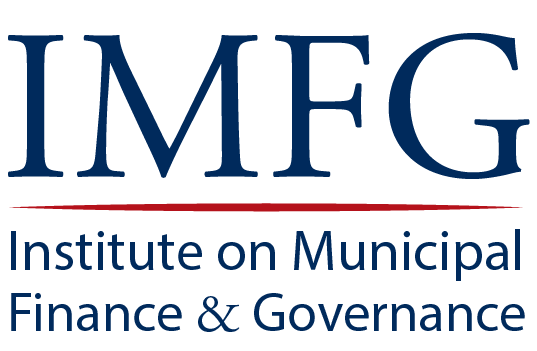Infrastructure Alone Won’t Fix the GTHA’s Transit Woes
by Steve Munro
Is the GTHA beyond the point at which transit can address travel demand? Roads, not transit, have set the travel pattern in the region, and there is little history of good transit service outside the City of Toronto.
What is the response of the federal and provincial governments? Build infrastructure and every problem will be solved! If only it were that easy.
Transit planning in the GTHA is a political business. Far too much attention is focused on a handful of rail-based projects. Within Toronto itself, a few projects, notably the Scarborough Subway Extension, are a litmus test of support for transit, to the detriment of overall planning.
But building rail – be it subways, light rapid transit (LRT), or commuter rail (GO) – solves problems only in limited places and responds only to specific travel demands. As one travels farther from the central business district, demand becomes more diffuse, as homes and jobs are spread over a wider area.
For decades, the region has grown around cars and their ability to make door-to-door trips. Capacity and choice of routes were the paramount issues, while access to shared services was downplayed. Each commuter had an individual car that could drive to an expressway on-ramp or a rapid transit station.
This model worked – provided the parking lots did not fill up and levels of road congestion remained tolerable. At least a decade ago that scheme ran aground as suburban growth overtook available capacity on roads, parking lots, and transit. Work on a new Regional Transportation Plan began with great fanfare, but today we do not have much to show for it.
Even if the plan is executed, the projected share of trips by transit would go up modestly in Toronto, but down in the region, as growth in car trips offsets transit gains within a rising population.
The updated Regional Transportation Plan (RTP) includes some core bus rapid transit (BRT) routes, but not the dense, frequent, easily accessed level of service required to shift drivers out of their cars. The Province has offered nothing toward better local bus service, and buses are unlikely to be a priority for the new Conservative regime.
The sheer volume of travel to Toronto’s core and the existence of a rail network focused on Union Station made commuter transit the low-hanging fruit within the RTP, but the real problem lies in serving trips that do not lie along rail corridors.
Moreover, there is no one, easy-to-plan-for node beyond the core, but many local nodes with only roads to serve them. Planners would like to see Pearson Airport rival Union Station as a transit hub, but it will be a challenge to serve this dispersed “centre” of jobs. Even Toronto’s core is no longer a dot on the map at King and Bay, but a growing area spreading from the Don River west to Parkdale, from Lake Ontario to Queen and beyond.
The challenge for transit is to serve the spaces between major corridors, some of which don’t exist yet. Local travel is key not just to reach major lines like GO, LRT, or subways, but to link transit with smaller destinations scattered around the region.
How this goal will be achieved will vary from place to place, but pure infrastructure projects are not the answer. The GTHA cannot afford to build on that scale everywhere, let alone create new lines on a timeframe that matters to a commuter contemplating a car-vs-transit decision today, or a landowner planning a new development.
This problem is a road-oriented development pattern in which the “last mile” is left to each individual. In older cities, a dense network of transit and walkable streets solved the problem, but this option is not practical for spread-out road-based development. Moreover, that “last mile” could be a lot more than a short jaunt from a rider’s local transit terminal.
If the park-and-ride model fails, will ride sharing, in some form, be part of a transit operation or a separate, for-profit service more akin to taxis than transit? Will shared-ride vehicles produce their own congestion and capacity limits, especially for scheduled services such as commuter trains? Will they be subsidized like transit, or will riders have to pay their way as they would with private cars? Who will own and maintain the fleets?
Infrastructure looks impressive and announcements give the impression that “something is being done.” But tunnels, trains, buses, and self-driving cars have operating costs, and governments are silent on who will pay, or how much a transit ride will cost once the new services are in place.
This is the gaping hole in the GTHA’s regional transit planning. Almost all government funding will go to capital projects – infrastructure – but little to operating the network at a service level and a price riders will accept. Municipalities with bare-bones transit service will have no incentive to improve, because new buses will mean only increased cost and higher taxes on voters who prefer to drive.
Those who can afford to live and work close to well-served corridors will cheer every new hole dug in the ground. They will be happy to see more buses on their routes if they provide frequent, reliable, uncrowded service. But many are not so lucky.
At the end of their mandate, the provincial Liberals proposed a fare union and subsidies for short trips on GO Transit and cross-border trips between Toronto and the 905. This move could have – should have – been implemented years ago, but it requires funding and its fate is now in doubt with the new regime at Queen’s Park. A stronger investment in service and unified fares might have strengthened transit, but higher operating subsidies do not sit well with promises of lower taxes and efficiency at Queen’s Park.
Is there still hope for the GTHA as a “transit city,” or will the region abandon itself to the cars around which it was built? Even with transit-friendly governments at every level, transit’s future is far from bright.

Steve Munro, winner of the 2005 Jane Jacobs Prize, is a long-time advocate for better public transit in Toronto. He writes for Spacing magazine and on his own blog at stevemunro.ca.
